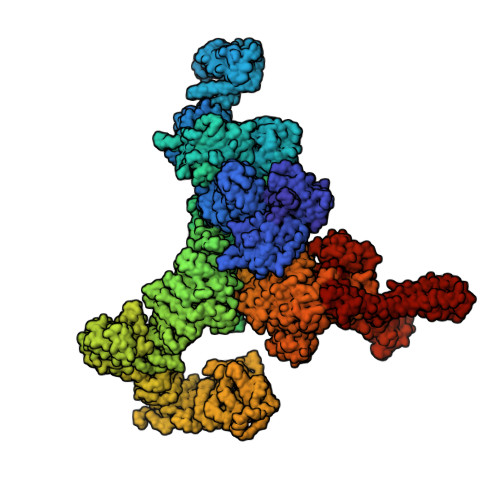Ca 2+ -inactivation of the mammalian ryanodine receptor type 1 in a lipidic environment revealed by cryo-EM.
Nayak, A.R., Samso, M.(2022) Elife 11
- PubMed: 35257661
- DOI: https://doi.org/10.7554/eLife.75568
- Primary Citation of Related Structures:
7K0T, 7TDG, 7TDH, 7TDI, 7TDJ, 7TDK - PubMed Abstract:
Activation of the intracellular Ca 2+ channel ryanodine receptor (RyR) triggers a cytosolic Ca 2+ surge, while elevated cytosolic Ca 2+ inhibits the channel in a negative feedback mechanism. Cryogenic electron microscopy of rabbit RyR1 embedded in nanodiscs under partially inactivating Ca 2+ conditions revealed an open and a closed-inactivated conformation. Ca 2+ binding to the high-affinity site engages the central and C-terminal domains into a block, which pries the S6 four-helix bundle open. Further rotation of this block pushes S6 toward the central axis, closing (inactivating) the channel. Main characteristics of the Ca 2+ -inactivated conformation are downward conformation of the cytoplasmic assembly and tightly knit subunit interface contributed by a fully occupied Ca 2+ activation site, two inter-subunit resolved lipids, and two salt bridges between the EF hand domain and the S2-S3 loop validated by disease-causing mutations. The structural insight illustrates the prior Ca 2+ activation prerequisite for Ca 2+ inactivation and provides for a seamless transition from inactivated to closed conformations.
Organizational Affiliation:
Department of Physiology and Biophysics, Virginia Commonwealth University, Richmond, United States.
















